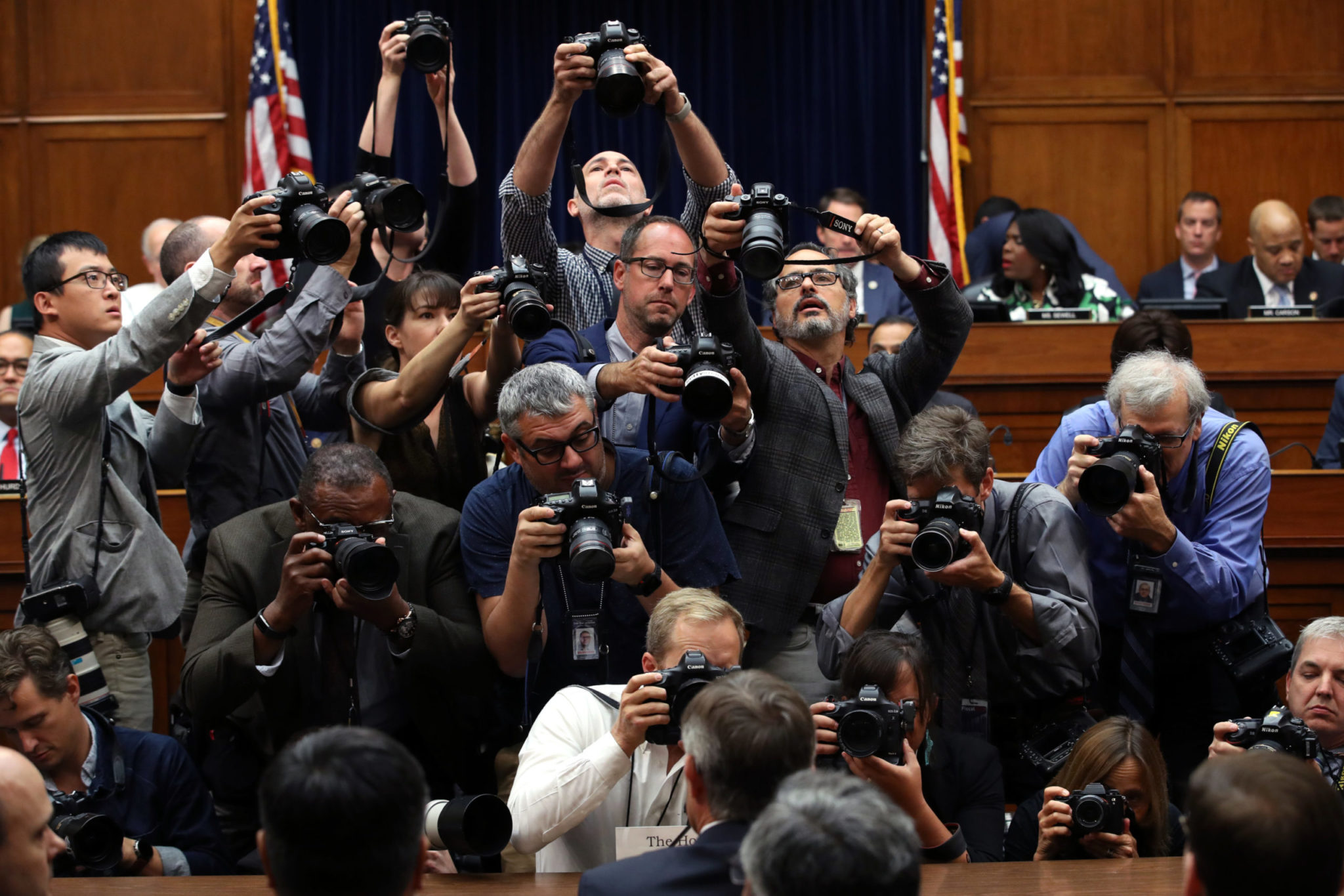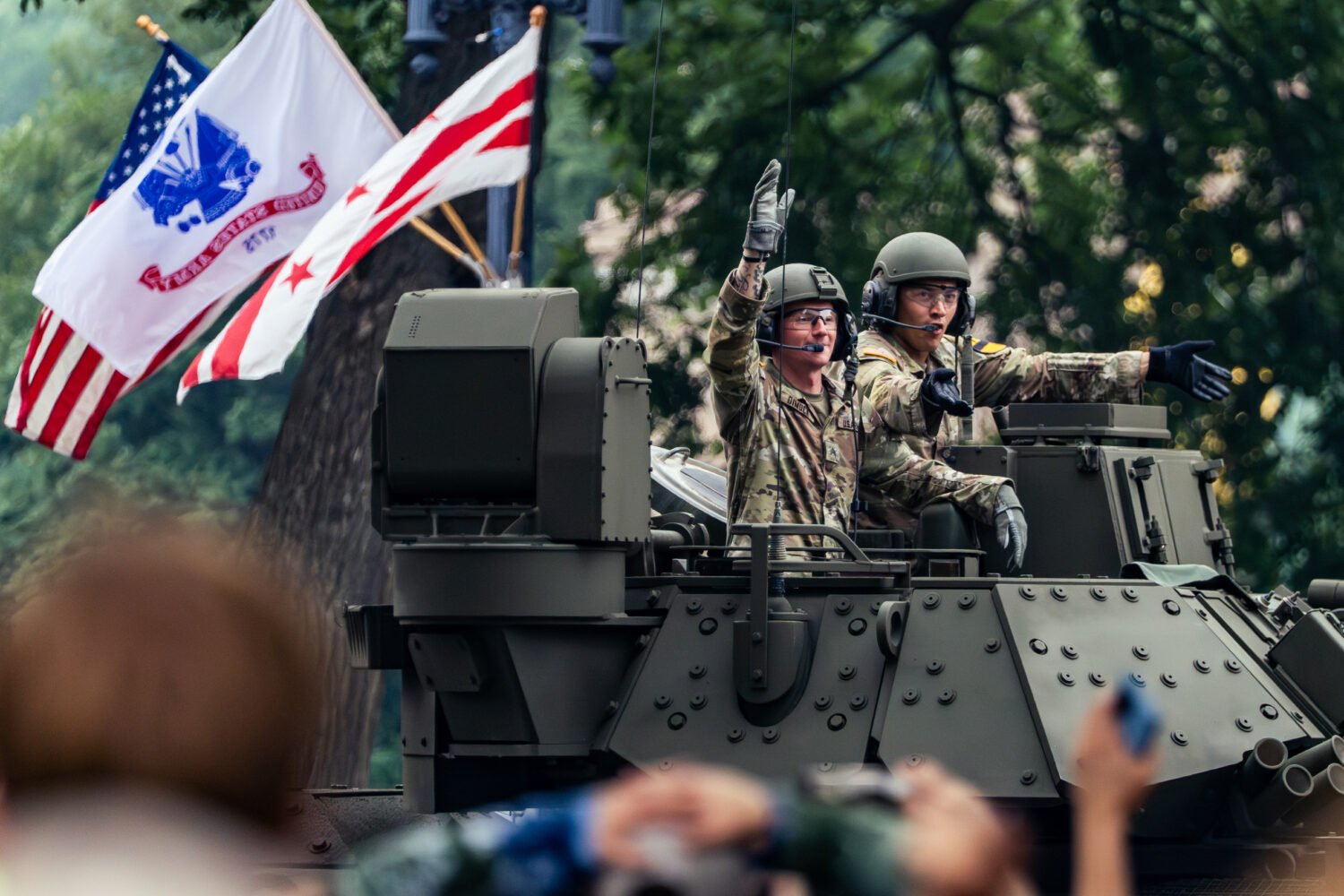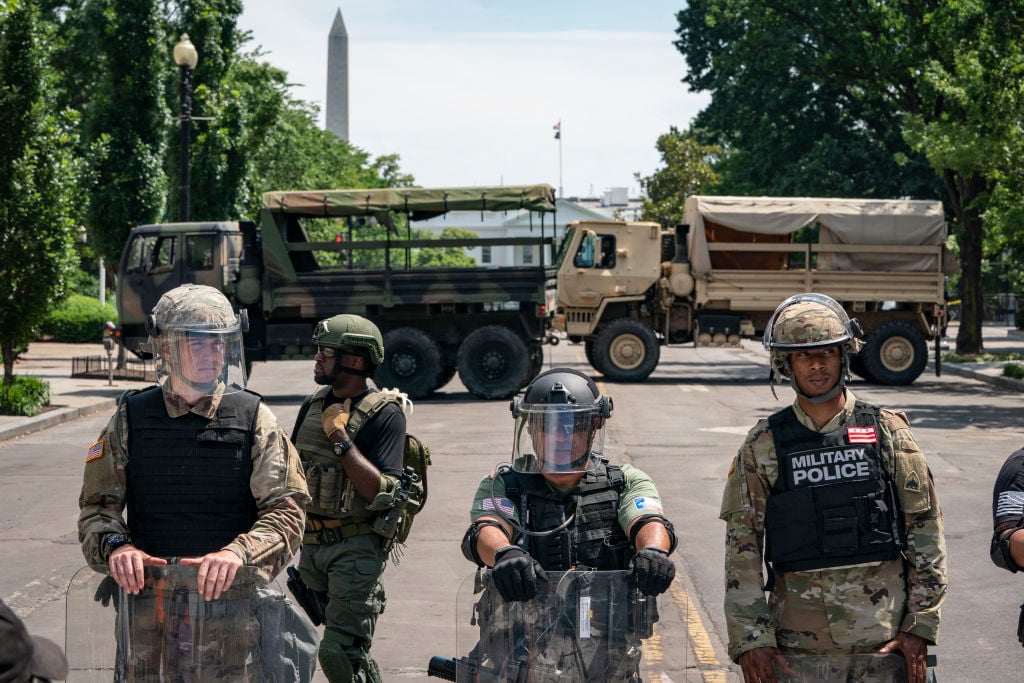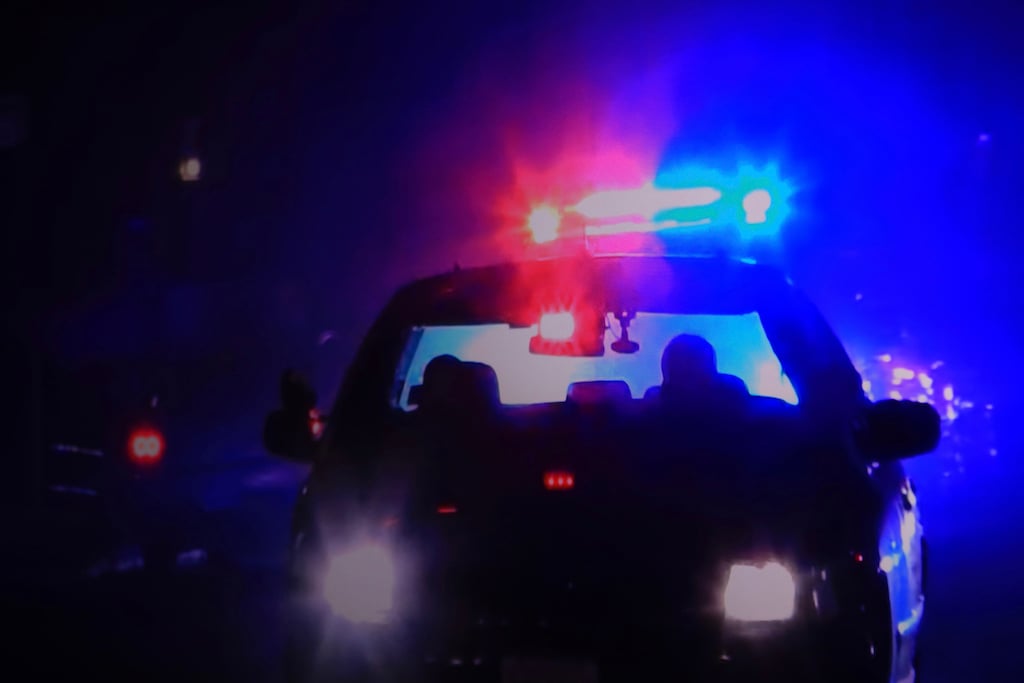So many words have been written about recent political events that it’s sometimes easy to overlook that other crucial part of newsgathering: photography. But for the camera-wielding pros who regularly cover the Hill, the Trump era has created a great deal of opportunity—and a lot of stress. “You don’t realize the intensity until the day is done,” says Amanda Andrade-Rhoades, a freelance photographer for outlets such as Bloomberg and the New York Times. “I’ll go for hours and hours and hours, and then at the end of the day I’m like, oh, my God—I’m starving and my legs are shaking from the adrenaline.”
Washington has always been a crucial source of photojournalism, of course, but the combination of social media and the Trump era has significantly boosted demand. “Politics has moved in front of celebrity at this point in time,” says Lori Reese, director of archive sales for the New York–based photo agency Redux Pictures. “It’s very, very competitive.”
During the recent impeachment hearings, for example, Andrade-Rhoades usually arrived before the witnesses got there, and she stayed as long as the hearings lasted, running in and out of the room to file photos as the day progressed. With 40 or so other photographers snapping away, the news value of a particular image tends to be short.
But it’s not just about being first. For a photo to really break through, it has to capture something viewers can connect to, as with recent viral photos of Nancy Pelosi clapping sarcastically at Trump and Gordon Sondland smirking at the camera on the day he testified before the House Intelligence Committee. “A lot of it is showing a genuine human feeling,” says Andrade-Rhoades. “So much of the time, our politicians can be very scripted and controlled.”
Though things can get heated when a scrum of photographers jostles to capture a potentially historic moment, the atmosphere mostly remains professional—which isn’t always the case in celeb-heavy cities like New York and Los Angeles. “Other areas are much more cutthroat and competitive than Washington,” says Samuel Corum, a freelance photographer who regularly contributes to Getty Images. “A lot of the time [in Washington], we are in very controlled situations or important locations where you can’t be pushing and shoving and yelling and screwing each other over.” Plus, a camaraderie has developed among the regulars. “We’re all working for different people, and we all want our shot,” says Andrade-Rhoades. “But we all look out for each other.”
This article appears in the February 2020 issue of Washingtonian.


















